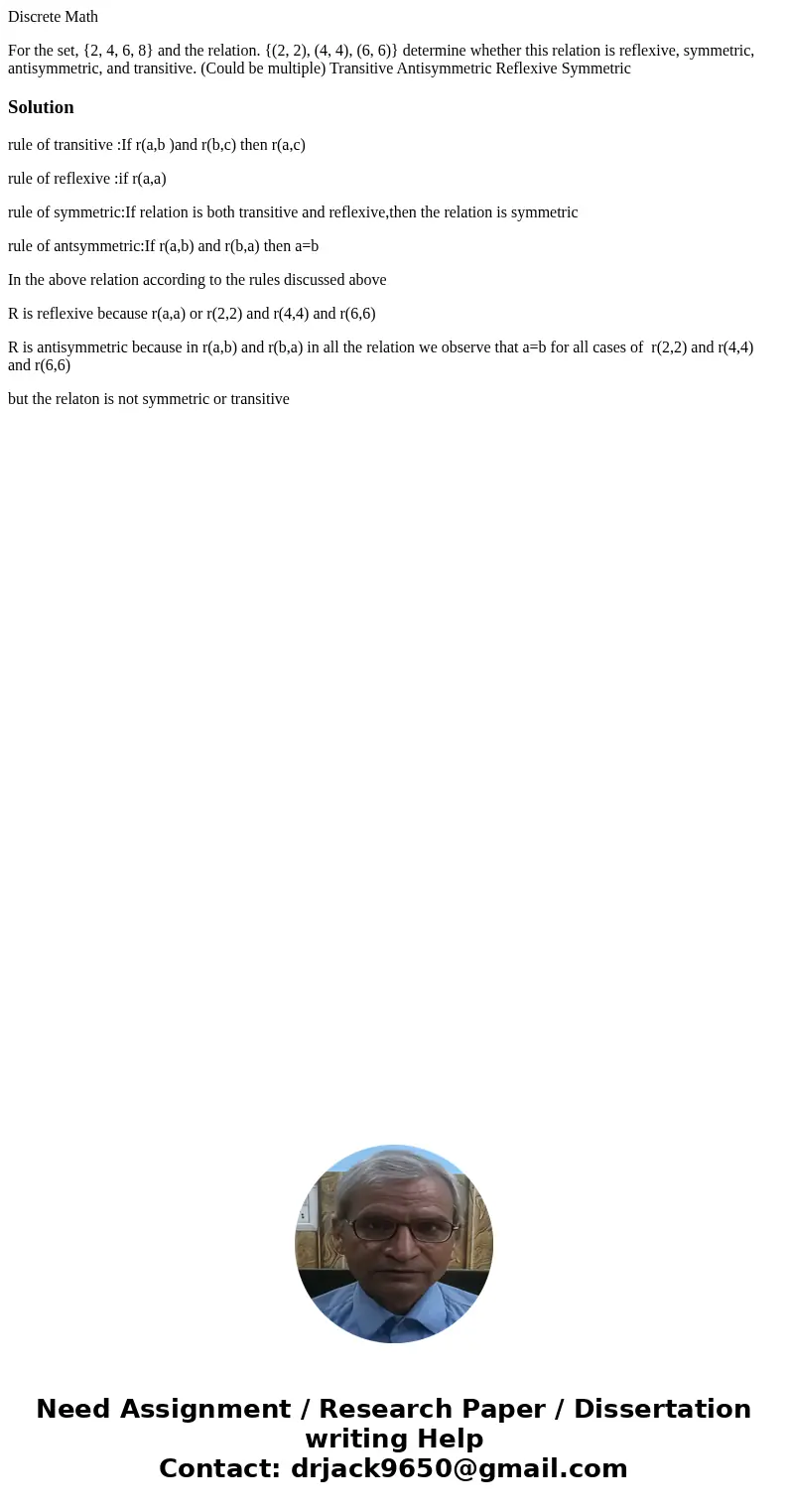Discrete Math For the set 2 4 6 8 and the relation 2 2 4 4 6
Discrete Math
For the set, {2, 4, 6, 8} and the relation. {(2, 2), (4, 4), (6, 6)} determine whether this relation is reflexive, symmetric, antisymmetric, and transitive. (Could be multiple) Transitive Antisymmetric Reflexive SymmetricSolution
rule of transitive :If r(a,b )and r(b,c) then r(a,c)
rule of reflexive :if r(a,a)
rule of symmetric:If relation is both transitive and reflexive,then the relation is symmetric
rule of antsymmetric:If r(a,b) and r(b,a) then a=b
In the above relation according to the rules discussed above
R is reflexive because r(a,a) or r(2,2) and r(4,4) and r(6,6)
R is antisymmetric because in r(a,b) and r(b,a) in all the relation we observe that a=b for all cases of r(2,2) and r(4,4) and r(6,6)
but the relaton is not symmetric or transitive

 Homework Sourse
Homework Sourse